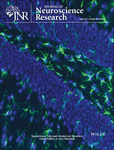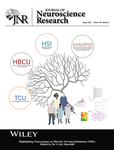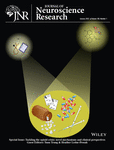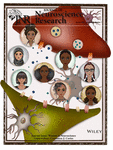Journal list menu
Export Citations
Download PDFs
COVER
Cover
- Page: i
- First Published: 05 August 2021
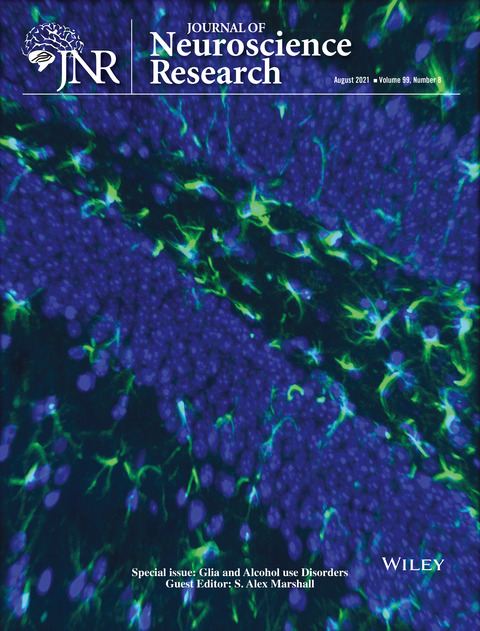
Immunhistochemically labeled astrocytes (GFP; anti-GFAP) in the dentate gyrus are integrated with other cells (DAPI). The abundance of astrocytes as well as their extensive coverage within the region indicates just how critical it is to understand their role in alcohol use disorders. Image credit: S. Alex Marshall.
ISSUE INFORMATION
COMMENTARY
Glial cells as influencers and maladaptive consequences of alcohol use disorders
- Pages: 1905-1907
- First Published: 01 June 2021
RESEARCH ARTICLES
Effects of adolescent intermittent ethanol on hippocampal expression of glutamate homeostasis and astrocyte-neuronal tethering proteins in male and female rats
- Pages: 1908-1921
- First Published: 20 November 2020
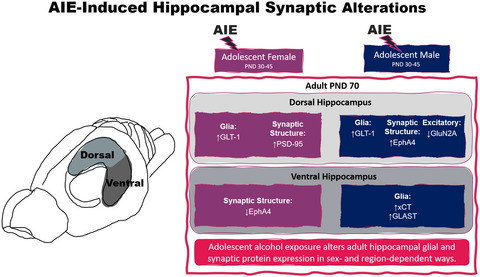
Male and female rats were exposed to adolescent intermittent ethanol (AIE; PND 30–45) and aged into adulthood (PND 70). Dorsal and ventral hippocampi were harvested for analysis of synaptic membrane protein expression. AIE caused adult hippocampal glial and synaptic protein expression alterations in a sex- and region-dependent manner. EphA4, ephrin receptor tyrosine kinase A4; GLAST, glutamate aspartate transporter 1; GLT-1, glutamate transporter 1; GluN2A, NMDA receptor subunit 2A; PSD-95, postsynaptic density 95; xCT, cystine-glutamate antiporter
Chronic intermittent ethanol and lipopolysaccharide exposure differentially alter Iba1-derived microglia morphology in the prelimbic cortex and nucleus accumbens core of male Long-Evans rats
- Pages: 1922-1939
- First Published: 03 July 2020
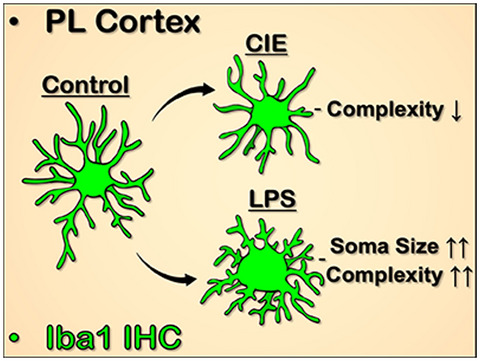
Microglia structural reorganization, and altered neuroimmune signaling, are implicated in pathological adaptations that promote excessive drinking. Here we used Iba1 immunohistochemistry, high-resolution confocal microscopy, and digital reconstruction analyses of Iba1-positive microglia in the prelimbic (PL) cortex and nucleus accumbens (NAc) of rats during withdrawal from chronic intermittent ethanol (CIE) exposure, rats injected with lipopolysaccharide (LPS), and an ethanol-naïve (air)-exposed group. We found that CIE and LPS led to dichotomous alterations in microglia structural complexity in the PL cortex that were largely absent in the NAc. These findings add to a growing body of literature pointing towards altered microglia structural complexity, and presumably function, in ethanol-induced adaptations in the brain.
Extracellular microvesicles promote microglia-mediated pro-inflammatory responses to ethanol
- Pages: 1940-1956
- First Published: 20 February 2021

Ethanol causes the secretion of pro-inflammatory microvesicles (MVs) from brain tissue. Ethanol-induced MVs reproduce the pro-inflammatory gene induction and microglial activation seen with ethanol alone, and inhibition of their secretion blocks ethanol-induced neuroinflammation. Microglia are required for the generation of pro-inflammatory MVs, with MV secretion involving activation of microglial PI3K.
Chemogenetic manipulation of astrocytic signaling in the basolateral amygdala reduces binge-like alcohol consumption in male mice
- Pages: 1957-1972
- First Published: 12 April 2021

Binge ethanol activates astrocytes resulting in an increase in glial fibrillary acidic protein (GFAP) immunoreactivity (red) in the basolateral amygdala. When astrocytic receptor signaling was activated using GFAP-Gq-GPCR designer receptors exclusively activated by designer drugs, it decreased ethanol consumption and ameliorated alcohol-induced depression of glutamate in the amygdala.
REVIEW
Neuroinflammatory contribution of microglia and astrocytes in fetal alcohol spectrum disorders
- Pages: 1973-1985
- First Published: 22 September 2020
RESEARCH ARTICLES
Ethanol modulation of cerebellar neuroinflammation in a postnatal mouse model of fetal alcohol spectrum disorders
- Pages: 1986-2007
- First Published: 02 February 2021
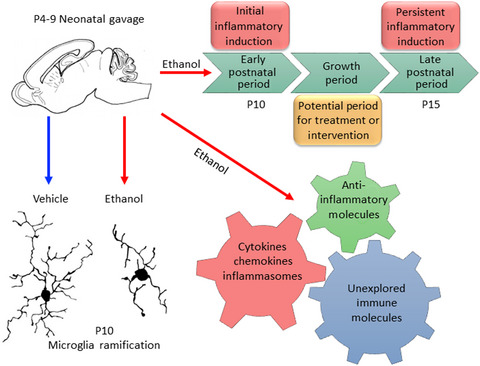
Postnatal exposure to ethanol resulted in pro-inflammatory molecule expression in mouse cerebellum that persisted for several days suggesting that anti-inflammatory agents may be effective in treating infants with FASD. Cerebellar microglial ramification and novel immune molecules were differentially regulated by ethanol. We demonstrate novel mechanisms for ethanol modulation of neuroinflammation.
Microglia and astrocytes show limited, acute alterations in morphology and protein expression following a single developmental alcohol exposure
- Pages: 2008-2025
- First Published: 19 February 2021
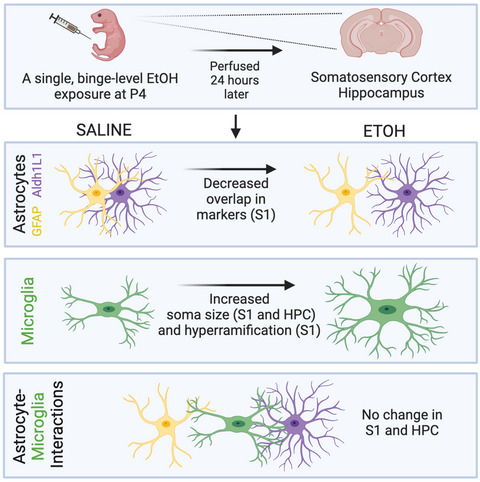
After a single, binge-level exposure to ethanol in development, we found subtle effects on glia in the mouse somatosensory cortex and hippocampus. Ethanol treatment reduced colocalization between two astrocytic markers, GFAP and Aldh1L1; induced region-specific changes in microglia volume, process morphology, and density; and had no effect on glial interactions.




